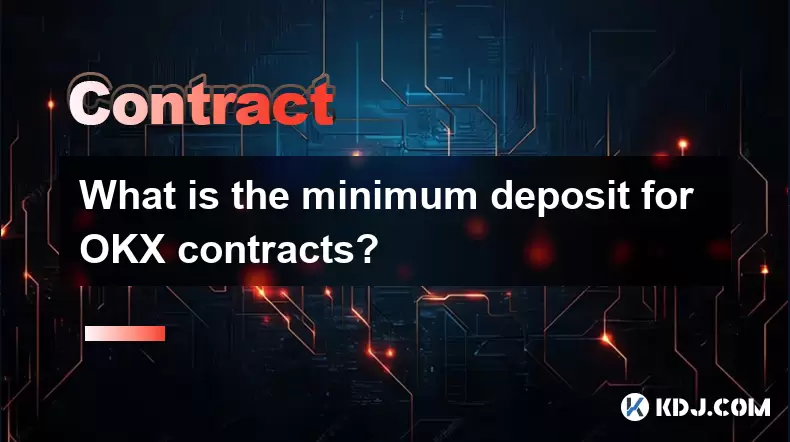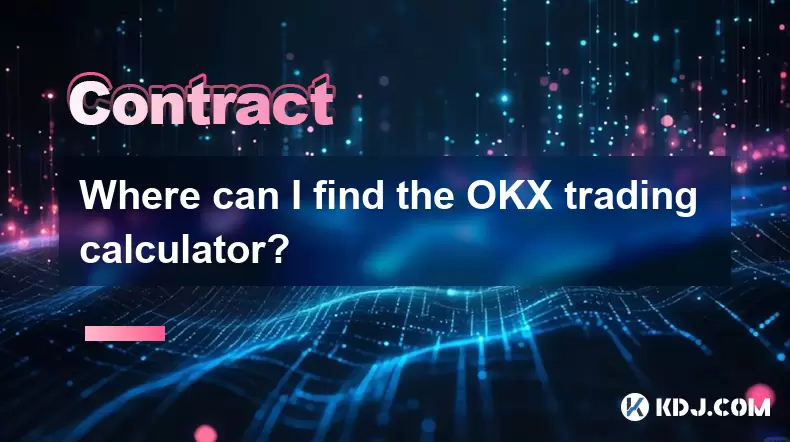-
 Bitcoin
Bitcoin $117500
2.15% -
 Ethereum
Ethereum $3911
6.19% -
 XRP
XRP $3.316
10.79% -
 Tether USDt
Tether USDt $1.000
0.01% -
 BNB
BNB $787.2
2.24% -
 Solana
Solana $175.2
4.15% -
 USDC
USDC $0.9999
0.00% -
 Dogecoin
Dogecoin $0.2225
8.40% -
 TRON
TRON $0.3383
0.28% -
 Cardano
Cardano $0.7868
6.02% -
 Stellar
Stellar $0.4382
9.34% -
 Hyperliquid
Hyperliquid $40.92
7.56% -
 Sui
Sui $3.764
7.63% -
 Chainlink
Chainlink $18.48
10.66% -
 Bitcoin Cash
Bitcoin Cash $582.1
1.88% -
 Hedera
Hedera $0.2601
6.30% -
 Avalanche
Avalanche $23.33
4.94% -
 Ethena USDe
Ethena USDe $1.001
0.02% -
 Litecoin
Litecoin $122.3
2.04% -
 UNUS SED LEO
UNUS SED LEO $8.969
-0.27% -
 Toncoin
Toncoin $3.339
0.86% -
 Shiba Inu
Shiba Inu $0.00001287
4.30% -
 Uniswap
Uniswap $10.43
7.38% -
 Polkadot
Polkadot $3.861
5.08% -
 Dai
Dai $1.000
0.02% -
 Bitget Token
Bitget Token $4.513
3.41% -
 Monero
Monero $267.7
-6.18% -
 Cronos
Cronos $0.1499
4.14% -
 Pepe
Pepe $0.00001110
5.15% -
 Aave
Aave $284.9
8.28%
How can I hedge my existing crypto holdings with Coinbase futures?
You can hedge crypto holdings on Coinbase by shorting perpetual futures via Coinbase Wallet and Hyperliquid, helping offset losses if prices drop.
Aug 08, 2025 at 07:29 am

Understanding Crypto Futures and Hedging on Coinbase
Hedging in the cryptocurrency market involves taking an offsetting position to reduce the risk of adverse price movements in an asset you already own. When you hold a long position in a cryptocurrency such as Bitcoin or Ethereum, you are exposed to downside risk if the market declines. By using Coinbase futures, you can protect your portfolio from such volatility. Coinbase offers futures trading through its advanced trading platform, Coinbase Advanced Trade, which supports derivatives like perpetual and quarterly futures contracts.
Futures contracts are agreements to buy or sell an asset at a predetermined price at a specified future date. In hedging, you would typically open a short futures position equivalent in value to your existing crypto holdings. This way, if the price of your held asset drops, the gains from your short futures position can help offset the loss in value of your spot holdings.
It’s important to note that Coinbase does not currently offer traditional futures contracts like those on centralized exchanges such as Binance or Bybit. Instead, it provides perpetual futures contracts on select cryptocurrencies through its partnership with Hyperliquid, accessible via the Coinbase Wallet interface. To hedge using these instruments, you must understand the mechanics of perpetual contracts, including funding rates and leverage.
Setting Up Your Coinbase Wallet for Futures Trading
To begin hedging with futures on Coinbase, you need to use Coinbase Wallet in conjunction with decentralized exchanges that support perpetual futures. The process starts by downloading the Coinbase Wallet app from the official website or app store. After installation, create a new wallet or import an existing one, ensuring you securely back up your recovery phrase.
Once your wallet is set up, connect it to Hyperliquid Exchange through the in-app browser or by visiting the Hyperliquid website and selecting “Connect Wallet.” Choose Coinbase Wallet as your provider. You must then bridge funds from your Coinbase account to your Coinbase Wallet, and from there to the Hyperliquid network. This involves two steps:
- Transfer USDC or the base cryptocurrency (e.g., ETH) from your Coinbase.com account to your Coinbase Wallet address.
- Use the Hyperliquid bridge to deposit assets into the Hyperliquid Layer 1 network, selecting the appropriate token and amount.
- Confirm the transaction in your wallet and wait for network confirmation.
Only after your funds are available on Hyperliquid can you trade perpetual futures contracts to hedge your holdings.
Executing a Hedge Using Perpetual Futures
Assume you hold 1 BTC in your Coinbase account and are concerned about a potential price drop in the next few weeks. To hedge this exposure, you can short 1 BTC worth of BTC/USDC perpetual futures on Hyperliquid via Coinbase Wallet. The following steps outline the process:
- Navigate to the Hyperliquid Exchange interface while your Coinbase Wallet is connected.
- Select the BTC/USDC perpetual contract from the trading pairs.
- Switch to short mode (if not already active) using the position mode selector.
- Enter the amount you wish to short—1 BTC—in the order form.
- Choose between a market order (immediate execution at current price) or a limit order (execution at a specified price).
- Review the leverage setting; for hedging, low leverage (e.g., 2x–5x) is recommended to minimize liquidation risk.
- Confirm the trade in your Coinbase Wallet.
This short position will gain value as BTC price falls, counterbalancing the depreciation of your spot BTC. The hedge remains effective as long as the futures position is open.
Monitoring and Managing Your Hedge
Once the hedge is in place, continuous monitoring is essential. Perpetual futures involve funding payments, which are periodic transfers between long and short positions based on the contract’s premium. If you are short, you may receive or pay funding depending on market conditions. These payments can accumulate over time and affect your overall hedging cost.
Use the Hyperliquid dashboard to track:
- Your current position size and entry price
- Unrealized PnL (Profit and Loss) of the short position
- Maintenance margin and liquidation price
- Funding rate history for the contract
To adjust the hedge:
- If you sell part of your spot BTC, reduce the short position proportionally.
- If volatility increases, consider increasing collateral to avoid liquidation.
- Use stop-loss or take-profit orders to automate position closure under specific conditions.
Always ensure your wallet has sufficient funds to cover potential margin calls, especially during high volatility.
Unwinding the Hedge When No Longer Needed
When you decide the risk of a price drop has passed or you wish to exit the hedge, you must close the short futures position. This is done by placing a buy-to-close order for the same amount you initially shorted.
- Go to the BTC/USDC perpetual market on Hyperliquid.
- Enter a buy order for 1 BTC (or the current open position size).
- Select market or limit order based on urgency and price preference.
- Confirm the transaction in your Coinbase Wallet.
Upon execution, your short position is closed, and any profit or loss from the futures trade is settled in USDC or the base currency. The funds remain on Hyperliquid and can be withdrawn back through the bridge to your Coinbase Wallet and then to your Coinbase.com account.
Closing the hedge eliminates your offsetting exposure. Your portfolio will once again be fully exposed to spot price movements.
Frequently Asked Questions
Can I hedge on Coinbase.com directly using futures?
No, Coinbase.com does not offer futures trading on its main platform. Futures-like hedging is only possible through Coinbase Wallet by connecting to decentralized derivatives platforms such as Hyperliquid. You cannot short or hedge directly within the standard Coinbase app.
What happens if my short futures position gets liquidated?
If the price of the cryptocurrency rises sharply and your margin falls below the maintenance threshold, your position will be automatically liquidated. This means you lose part or all of your collateral, and the hedge fails. To prevent this, use low leverage and monitor your position closely during volatile markets.
Is hedging with perpetual futures cost-effective over long periods?
Holding short perpetual positions for extended durations can incur ongoing funding fees. While shorts often receive funding payments in normal markets, during periods of high long interest, shorts may have to pay. These recurring costs can erode the effectiveness of long-term hedges.
Can I hedge altcoins like ETH or SOL using this method?
Yes, Hyperliquid supports perpetual contracts for ETH, SOL, and other major altcoins. You can short these assets in the same way as BTC. Ensure you match the amount of your spot holdings and use the correct trading pair (e.g., ETH/USDC) to create an effective hedge.
Disclaimer:info@kdj.com
The information provided is not trading advice. kdj.com does not assume any responsibility for any investments made based on the information provided in this article. Cryptocurrencies are highly volatile and it is highly recommended that you invest with caution after thorough research!
If you believe that the content used on this website infringes your copyright, please contact us immediately (info@kdj.com) and we will delete it promptly.
- Tron's Sell-Off Spurs Altcoin Shift: What's Next for TRX?
- 2025-08-08 08:30:12
- RUVI Presale: Is the Growth Potential Real?
- 2025-08-08 09:10:12
- Sleep Token's US Takeover: Thornhill Rides the 'Even In Arcadia' Wave
- 2025-08-08 08:30:12
- FTT Token's Wild Ride: Creditor Repayments vs. Market Drop - A New Yorker's Take
- 2025-08-08 07:10:12
- Floki Crypto Price Prediction: Riding the Robinhood Rocket or Just a Meme?
- 2025-08-08 07:15:12
- EigenLayer, Restaking, and Ethereum: Navigating the Hype and the Hazards
- 2025-08-08 06:30:12
Related knowledge

What are the specific maker and taker fees on KuCoin Futures?
Aug 08,2025 at 08:28am
Understanding Maker and Taker Fees on KuCoin FuturesWhen trading on KuCoin Futures, users encounter two primary types of fees: maker fees and taker fe...

What is the maximum leverage available on KuCoin Futures?
Aug 08,2025 at 10:21am
Understanding Leverage in KuCoin Futures TradingLeverage in KuCoin Futures allows traders to control a larger position size using a smaller amount of ...

What is the minimum deposit for OKX contracts?
Aug 08,2025 at 07:00am
Understanding OKX Contract Trading BasicsOKX is one of the leading cryptocurrency derivatives exchanges, offering a wide range of perpetual and future...

Where can I find the OKX trading calculator?
Aug 08,2025 at 07:49am
Understanding the OKX Trading Calculator FunctionalityThe OKX trading calculator is a powerful analytical tool designed to assist traders in estimatin...

Can I trade options on OKX?
Aug 08,2025 at 11:01am
Understanding Options Trading on OKXYes, you can trade options on OKX. OKX is one of the leading cryptocurrency derivatives exchanges that offers a de...

What are the available trading pairs for OKX futures?
Aug 08,2025 at 08:49am
Understanding OKX Futures Trading PairsOKX is one of the leading cryptocurrency derivatives exchanges, offering a wide range of futures trading pairs ...

What are the specific maker and taker fees on KuCoin Futures?
Aug 08,2025 at 08:28am
Understanding Maker and Taker Fees on KuCoin FuturesWhen trading on KuCoin Futures, users encounter two primary types of fees: maker fees and taker fe...

What is the maximum leverage available on KuCoin Futures?
Aug 08,2025 at 10:21am
Understanding Leverage in KuCoin Futures TradingLeverage in KuCoin Futures allows traders to control a larger position size using a smaller amount of ...

What is the minimum deposit for OKX contracts?
Aug 08,2025 at 07:00am
Understanding OKX Contract Trading BasicsOKX is one of the leading cryptocurrency derivatives exchanges, offering a wide range of perpetual and future...

Where can I find the OKX trading calculator?
Aug 08,2025 at 07:49am
Understanding the OKX Trading Calculator FunctionalityThe OKX trading calculator is a powerful analytical tool designed to assist traders in estimatin...

Can I trade options on OKX?
Aug 08,2025 at 11:01am
Understanding Options Trading on OKXYes, you can trade options on OKX. OKX is one of the leading cryptocurrency derivatives exchanges that offers a de...

What are the available trading pairs for OKX futures?
Aug 08,2025 at 08:49am
Understanding OKX Futures Trading PairsOKX is one of the leading cryptocurrency derivatives exchanges, offering a wide range of futures trading pairs ...
See all articles

























































































